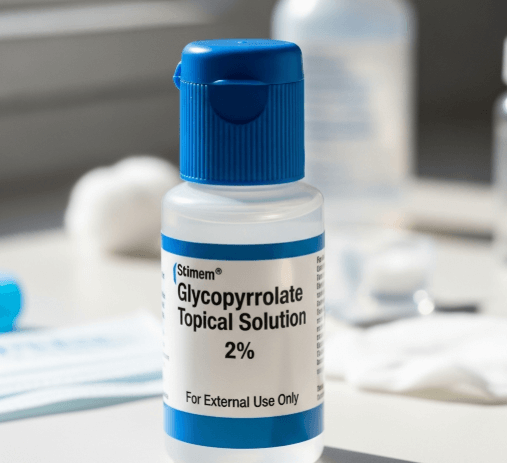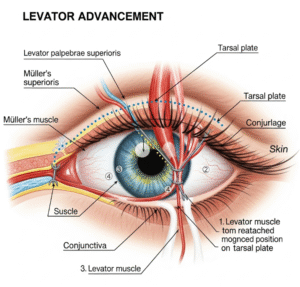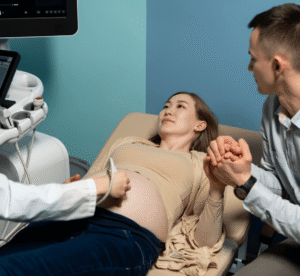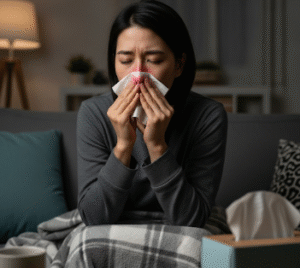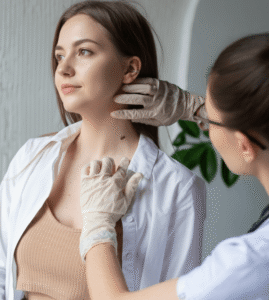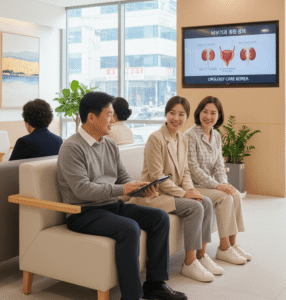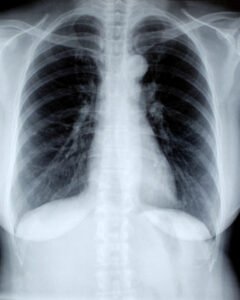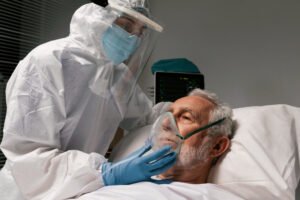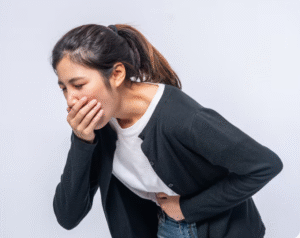What it is
Glycopyrrolate topical is a prescription anticholinergic medication used in cream, gel, or wipe form to treat localized hyperhidrosis (excessive sweating). Unlike aluminum chloride, which blocks sweat ducts, glycopyrrolate works by blocking acetylcholine receptors in sweat glands, preventing the activation of sweat production.
It is particularly effective for:
- Facial hyperhidrosis (forehead, upper lip, scalp)
- Underarm sweating (axillary hyperhidrosis)
- Palmar or plantar hyperhidrosis (hands and feet, though less commonly used due to absorption issues)
💡 In Korea, topical glycopyrrolate is often used when aluminum chloride is too irritating or when sweating occurs in sensitive areas like the face.
Why it’s done
Topical glycopyrrolate is prescribed for patients who need precise, localized sweat control without systemic side effects from oral medications.
✔ To reduce excessive sweating in visible or sensitive areas (especially face/scalp)
✔ To provide an alternative to Botox injections in facial regions
✔ To avoid systemic side effects such as dry mouth or blurred vision
✔ To manage sweating before special events or performances (popular among Korean entertainers)
✔ To complement other therapies like iontophoresis or Botox
Alternatives
If topical glycopyrrolate is not an option, alternatives include:
➡️ Aluminum chloride – First-line, affordable, but may irritate sensitive skin.
➡️ Botox injections – Effective, but more invasive and temporary (4–6 months).
➡️ Iontophoresis therapy – Great for hands/feet, less practical for face.
➡️ Oral anticholinergics – Broader effect, but higher risk of side effects.
➡️ MiraDry (microwave therapy) – Permanent sweat reduction, mainly for underarms.
➡️ Laser or surgical sympathectomy – Last-resort options.
In Korea, glycopyrrolate topicals are often prescribed alongside K-beauty calming skincare products to protect the skin barrier.
Preparation
Before starting glycopyrrolate topical therapy in Korea:
- 🔹 Consultation – Dermatologists assess sweat severity, location, and triggers.
- 🔹 Skin check – Ensure no eczema, open wounds, or irritation in the target area.
- 🔹 Test patch – Small area application to check for sensitivity.
- 🔹 Pre-application care – Clean and dry skin thoroughly before applying.
- 🔹 Lifestyle review – Adjusting caffeine intake, stress management, and skincare routine to minimize flare-ups.
How it’s Done
The regimen for topical glycopyrrolate is typically:
- Application
- Applied thinly to the affected area (underarms, face, palms, or soles).
- For face/scalp → often in cream or wipe form to avoid dripping.
- For underarms → roll-on or gel-based solutions may be used.
- Timing
- Usually applied once daily, often in the evening or before events.
- Effects begin in 1–2 hours and last up to 8–12 hours.
- Absorption
- Avoid applying to broken skin, mucous membranes, or large areas to prevent systemic absorption.
- Hands should be washed thoroughly after application.
- Follow-up
- Dermatologists in Korea often monitor progress every 2–4 weeks, adjusting strength and frequency.
Recovery
Recovery from topical glycopyrrolate use is simple since it’s non-invasive:
➡️ Immediate relief – noticeable reduction in sweating within hours.
➡️ Daily usability – Can be incorporated into morning or evening routines.
➡️ Skin sensitivity – Some patients may experience mild dryness, redness, or stinging.
➡️ Long-term use – Safe with dermatologist supervision, but requires ongoing application.
Korean dermatology clinics frequently recommend hydrating essences, calming creams, or herbal sprays to minimize irritation.
Complications
While generally safe, glycopyrrolate topicals may have side effects, especially if overused:
⚠ Possible risks include:
- Mild skin irritation, redness, or itching
- Accidental transfer to eyes (causing blurred vision or pupil dilation)
- Systemic absorption leading to dry mouth, dizziness, or urinary issues (rare, from large-area use)
- Reduced effectiveness over time in some patients
Korean specialists minimize risks by prescribing small-area use, monitoring progress, and combining therapy with barrier-repair skincare.
Treatment Options in Korea
Korea offers topical glycopyrrolate as part of a stepwise hyperhidrosis management system:
🇰🇷 Common Korean Approaches:
- Dermatologist-prescribed glycopyrrolate creams/gels (0.5–2%)
- Medicated wipes for face/scalp hyperhidrosis (popular among professionals and students)
- Combination therapy with iontophoresis for hands/feet
- Add-on care with K-beauty products (aloe vera gels, mugwort sprays) to calm skin
- Performance-based use – Some entertainers use glycopyrrolate wipes before concerts or broadcasts
✅ Final Thoughts
Topical glycopyrrolate in Korea is an effective and practical solution for localized hyperhidrosis, especially in sensitive areas like the face, scalp, and underarms. It provides fast relief, minimal downtime, and fewer systemic side effects compared to oral medications.
Korean clinics elevate the therapy by integrating it with skin-soothing regimens and holistic care, ensuring both sweat reduction and skin protection. This makes glycopyrrolate topical a highly valued treatment option in Korea’s comprehensive hyperhidrosis care system.

